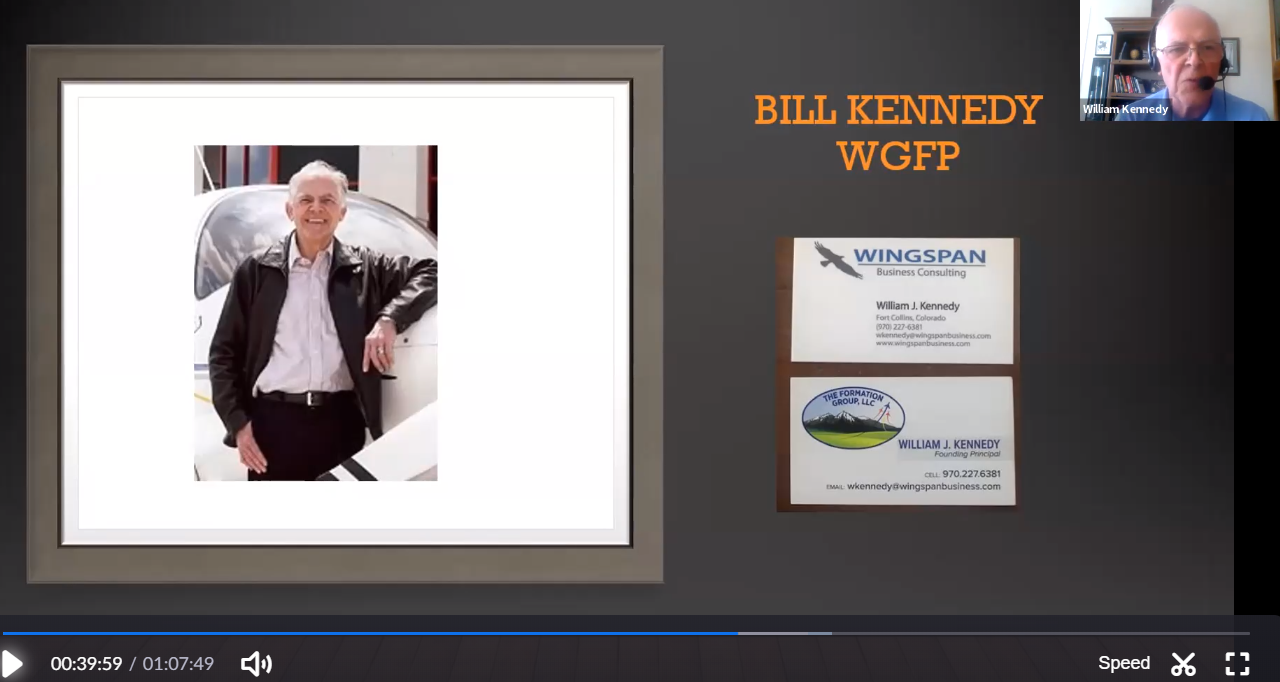 For our Zoom meeting on July 15, Bill Kennedy summarized the background and expected results for the Colorado Remote Tower Project (CRTP), an effort to develop the necessary infrastructure and processes for managing air traffic at multiple airports from a single facility.
For our Zoom meeting on July 15, Bill Kennedy summarized the background and expected results for the Colorado Remote Tower Project (CRTP), an effort to develop the necessary infrastructure and processes for managing air traffic at multiple airports from a single facility. Mr. Kennedy is a retired Air Force pilot focused on developing local enterprises in NE Colorado, in this case as an advisor to the Northern Colorado Regional Airport (NCRA). His advocacy efforts helped convince the Federal Aviation Administration (FAA) locate the Remote Tower Project at NCRA.
This project is the only public effort in the US to develop a system using satellite- and ground-based assets to manage air traffic at multiple airports from a single facility. The project employs a distributed camera system that, through optical links to a control center, provides a view of the entire airport and the approaches to the runways. Additional cameras provide blind-spot coverage. The cameras allow for enlargement of views as well as controllable lenses for counteracting glare or other optical effects. Radar data is displayed in boxes on the controller’s screen to tie into the visual information. When used for two or more airports, the air-traffic controllers will be able to flip a switch to go from one airport to another. As the entire system is electronic, the controllers may be located almost anywhere.
In the US, there are some 15,000 airports of which some 5000 see regular service but only some 500 have control towers. It costs some $7 million to install a tower at an airport, whereas this system is expected to cost on the order of $2.5 million. Thus, there is a significant economic driver to developing this sort of technology. Benefits are expected to include improved air safety, improved operational efficiency, tower construction and operation savings, as well as increased airline services, widespread community benefits, and attraction of diverse industries.
NCRA is an excellent location for development of this technology: it is Colorado’s busiest airport without a tower; it has a reasonable mix of air traffic types and a good operational tempo; there is a reasonable mix of air-space classes nearby; it is compatible with the CDOT mountain weather alert system; there are nearby research universities as well as technology infrastructure.
Funding is divided between CDOT ($8.8 m), FAA (all above the CDOT funding), the cities of Fort Collins & Loveland (in-kind staff support). If all goes well, regular commercial access through NCRA should be available by January, 2022, possibly sooner. This will provide better access to air travel for the approximately 8000 people in Northern Colorado who travel to DIA every day (pre-Covid data).
Although the FAA provided a temporary shadow control center for the development period, that center is temporarily inactive due toe advent of Covid-19, so progress on the project has been halted for the time being. New sensors (e.g., infrared imaging) may be added to the sensor array as needed to increase the capabilities of the system. There is little redundancy now but would be expected to be in place once the system is operational. In the event of failure of the system, pilots would be notified to revert to pilot-controlled rules.